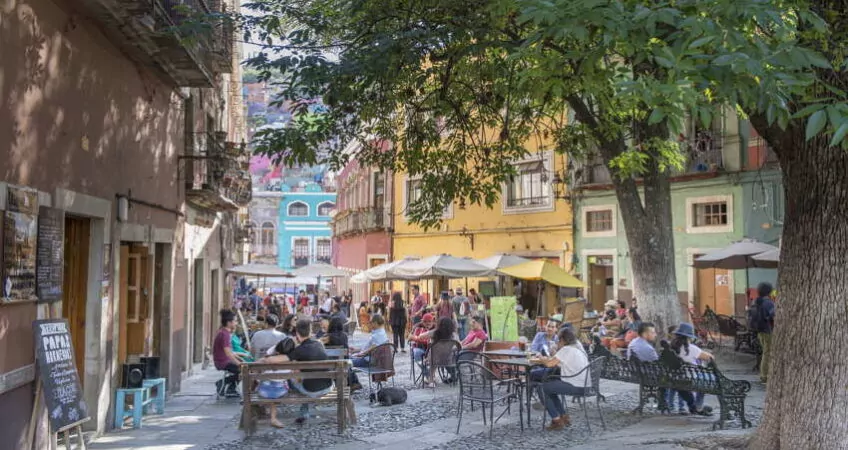
Move To America’s Most Popular Expat Destination In 2 Weeks
This Historic Seaside Town Is A Hidden Investment Gem
More Americans and Canadians have chosen to live or retire on Mexico’s two long and beautiful coastlines than they have anywhere else in the world.
The choices are so broad for seaside living in this country that you can actually specify a price point, a convenience factor, and a lifestyle and still have plenty of options.
A Sample Of Your Top Options On Mexico's East Coast...
Cancún—one of Mexico’s top two resorts—began in 1974 as a tourism project at a small fishing village. As it exploded into a tourist mecca of more than 700,000, the swath of development extended southward to Playa del Carmen… transforming it from a fishing village to a town of more than 150,000 today.
Playa del Carmen (Playa) is just 57 minutes south of Cancún, and it has taken over as the region’s chic place to be (and the place to be seen). You’ll find vacationing Europeans and North Americans, as well as a sizeable number of expats in residence.
Just off the town square is the renowned Quinta Avenida (5th Avenue) running parallel to the shore, and offering more than 20 blocks of fine restaurants and shops. It’s almost as big a draw as the beautiful beaches.
A team from Live and Invest Overseas was recently dispatched to investigate the area in-depth, and found Playa to be a great place for the income investor.
Specifically, rental yields are as high as 10%… combined with a 12% annual property appreciation. Playa del Carmen may already be “discovered”… but the investor should still pay attention.
At next month’s Live and Invest in Mexico Virtual Event, we’ll show you Playa del Carmen’s best real estate opportunities and walk you through exactly how to take advantage of them.
The Riviera Maya is the section of Caribbean coast on the eastern side of the Yucatán Peninsula between Playa del Carmen and Tulum. It’s about 125 miles long.
Development in this area is moving slowly but surely southward from Cancún and Playa, as developers and pioneers seek unspoiled beaches and towns that remain convenient to Cancún’s international airport.
For example, just a few years ago, the town of Tulum consisted of a handful of cabins and a few fishing shacks. Today, the census counts over 18,000 people in Tulum, and it’s full of opportunity.
The Riviera Maya features warm Caribbean waters and pristine beaches. Also, the Great Mayan Reef—the second largest barrier reef in the world—is located offshore, providing world-class diving and snorkeling.
Another draw to this area is the presence of the best-preserved Mayan archeological sites… plus a few world-class golf courses to round out the local attractions.
This section of coastline holds some of the best path of progress buys you’ll find today, as expats and investors buy in the path of mainstream developers’ southward progress.
High prices and existing development are found at the northern end of the Riviera Maya… while low prices, low development, and high opportunity lie to the south.
So you can choose between an established market with its chic lifestyle and good returns at Playa del Carmen near the north end… or invest for capital gains in a less-developed environment by buying in the path of progress as you move south.
At next month’s Live and Invest in Mexico Virtual Event, we’ll showcase the best lifestyle and investment opportunities along the Riviera Maya.
Here Are Your Top Options On The Pacific Coast
Puerto Peñasco is the seaside resort that’s most convenient to the United States by car… just over one hour from the border. Also known as Rocky Point, it has been a playground for the western United States and Canada for almost 100 years.
Homeowners in Puerto Peñasco can drive over the border and head right for their seaside home without even stopping to register the car.
Puerto Peñasco enjoys warm, calm waters all year, broad sandy beaches, lots of housing options, and low property prices.
Best of all, I found that two-bedroom condos on this beach start at just US$99,000. Perfect for a vacation home or a weekend getaway.
I traveled to Puerto Peñasco just recently, and at next month’s Live and Invest in Mexico Virtual Event I’ll walk you through the ins and outs of one of Mexico’s most convenient west-coast locations.
Mazatlán has rebounded from the 1970s and 80s, when it was mostly forgotten as a resort. Today, it’s a sought-after top expat haven.
Today, its 10 miles of beaches and boardwalks are once again as busy as when John Wayne and Gary Cooper were in town. And these past two years, Canadians have returned to the market with a vengeance, along with a handful of Americans.
Even better, the historic center has been newly renovated. Now it’s a fine example of Spanish-colonial America, with plenty of world-class restaurants, sidewalk cafés, and a beachfront promenade. Each time I return I’m amazed at the restoration progress.
In fact, I recently bought a condo in Mazatlán’s historic center that’s also right on the beach… allowing me to enjoy both worlds.
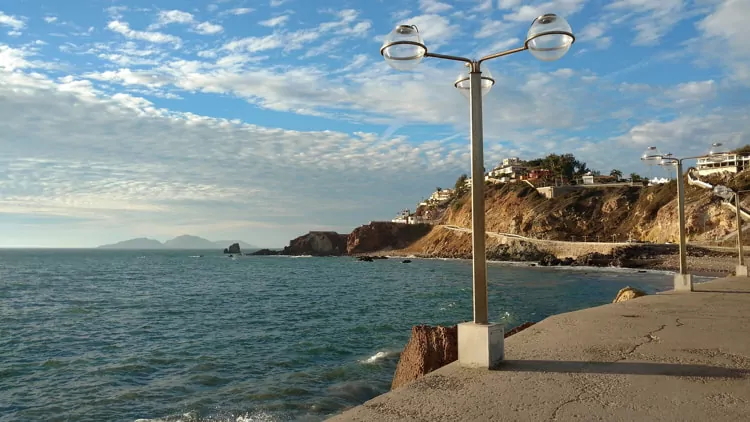
When you join me for next month’s Live and Invest in Mexico Virtual Event, our on-the-ground team and I will showcase the best lifestyles that today’s Mazatlán has to offer, as well as its best property deals.
Puerto Vallarta has been one of Mexico’s most-popular resorts since the 1960s, although its rich colonial history goes back hundreds of years.
Unlike many resort areas, PV has a number of coastal sections with beaches interspersed among them… meaning different areas have their own unique character. For LGBT expats and travelers, PV is the most gay-friendly destination we’ve found in Latin America.
Puerto Vallarta excels when it comes to ocean views. Here, you’ll find lots of properties perched on lush, green hillsides, and long views looking out to the ocean.
Over on the Baja Peninsula, the first destinations that probably come to mind are Ensenada, or maybe Los Cabos, both very popular areas.
But how about the small seaside town of Loreto? At first glance, it seems like a half-forgotten fishing village that’s on its way to becoming a resort and second-home destination.
But Loreto has two interesting twists. One is that it’s being promoted by FONATUR, the government agency that created Cancún.
And, perhaps more important, Carlos Slim—one of the world’s richest individuals—has purchased the struggling Loreto Bay Golf Resort and Spa, as well as its unsold lots and the undeveloped land.
With both FONATUR and Carlos Slim behind Loreto, it may just be a hidden investment gem.
We’ll take a look at Loreto’s full potential at next month’s Live and Invest in Mexico Virtual Event.
Not everyone is a beach person. In fact, at least as many full-time expats in this country have chosen the ambiance and brilliant weather of Mexico’s colonial heartland over its beautiful coastlines.
Mexico truly shines for its wealth of Spanish-colonial cities and their impressive colonial architecture.
Three Examples Of Top Colonial-Living Options In Mexico
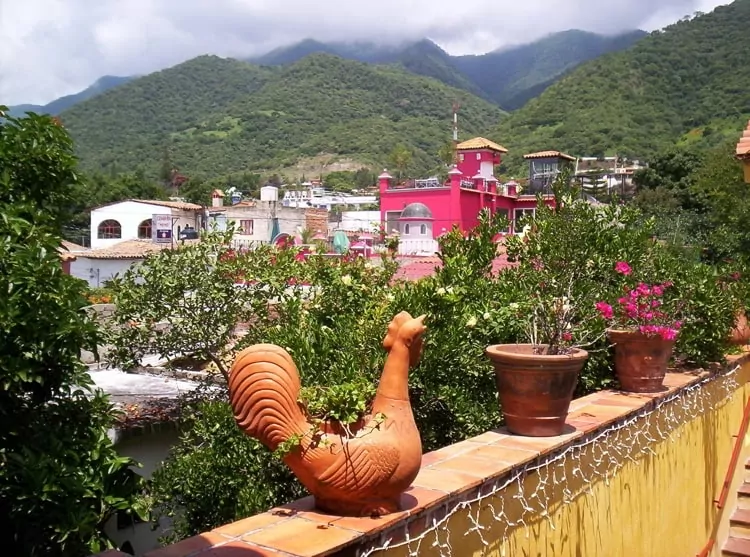
Ajijic
Ajijic (pronounced ah-hee-HEEK) is a remarkably picturesque and friendly colonial town. Located at 5,000 feet above sea level (1,500 meters) the weather is just about perfect all year. Ajijic is a 500-year-old village, located on the shores of Lake Chapala, Mexico’s largest lake.
The narrow cobblestone streets are lined with colorful houses, along with more boutiques, galleries, and restaurants than you’d expect in a town this size.
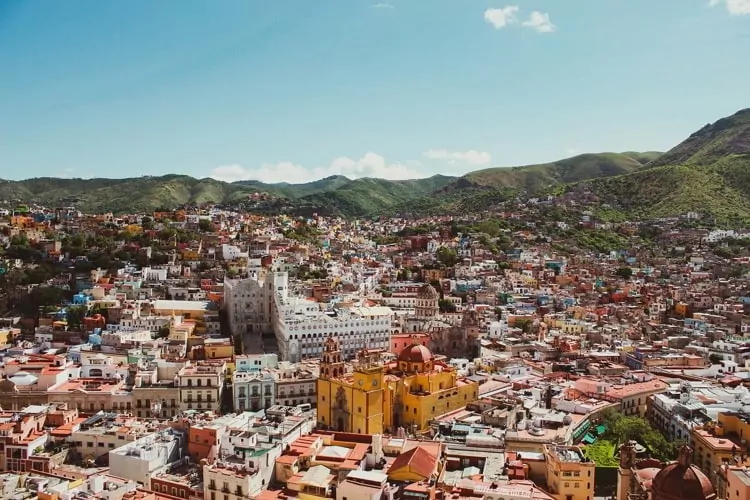
Guanajuato
Guanajuato is another colonial gem, but it’s a gem that’s less polished and more natural than Mexico’s famous expat haunts. I’ve heard it’s called the “most romantic city in Mexico.”
Instead of Ajijic’s thousands of expats, for example, Guanajuato’s number is in the hundreds. It’s still a large town with everything you need—with beautiful architecture—but it’s more of a “Mexican” town, with less expat influence.
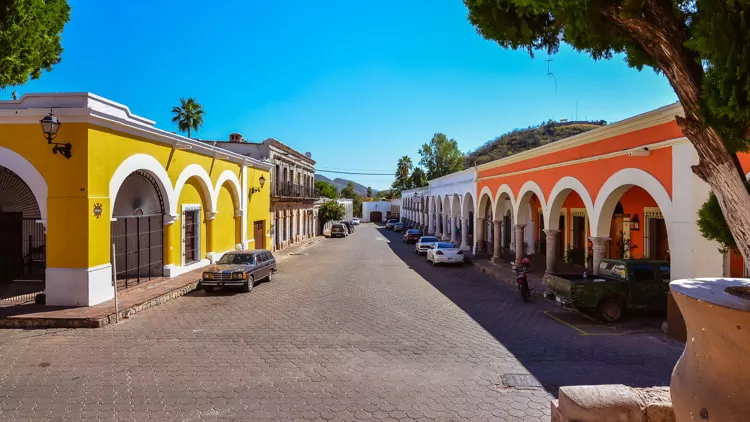
Alamos
Álamos is a small town of less than 25,000 people, but the state of restoration and preservation in its historic center is beyond anything I’ve seen, anywhere.
Of the dozens of Latin American cities that bill themselves as a “bohemian town that’s home to artists, writers, musicians, and poets,” Álamos is the only one where I’ve actually met a large percentage of artists, writers, musicians, and poets.
Álamos is also home to a big and welcoming community of female expats. In fact, I’d say it’s one of the best places in the world for a single woman moving abroad on her own.
For a small-town alternative to cities like San Miguel, Guanajuato, and Oaxaca, Álamos is the best I’ve seen.
Lee Harrison



